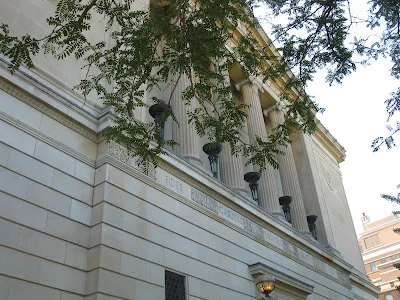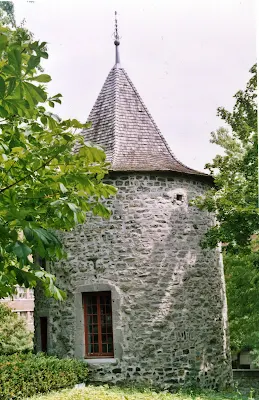 |
| 23 August 2023 |
 |
| Old photo of Medical Arts Building, corner of Sherbrooke Street West and where Guy becomes Cote des Neiges Road; photo from the 1920s. |
Recently, I was on the tenth floor of the Medical Arts building and looking out of the window, looking west along Sherbrooke Street, I noticed buildings that are important to my family. There was the Grand Seminaire (the College de Montreal), formerly run by the Sulpician Order that still owns this and other properties, for instance, Cote des Neiges Cemetery, on the Island of Montreal. My two great great uncles, Fr. Martin Callaghan and Fr. James Callaghan were educated at le College de Montreal and they both went on to prominent roles in the city; for instance, Fr. Martin was the first Montreal-born pastor at St. Patrick's Church; Fr. James was pastor at St. Ann’s Church in Griffintown. Fr. Martin and Fr. James are buried at the crypt below the church at the Grand Seminaire de Montreal. A third brother, Fr. Luke Callaghan, was the man who saved St. Mary's Hospital when its survival was in doubt. Fr. James and Fr. Martin are buried in the crypt under the large chapel at the Grand Seminaire de Montreal; Fr. Luke is buried at Cote des Neiges Cemetery.
Across the street from the Grand Seminaire is the Masonic Temple, where my grandfather and uncle were both Masons. It is a magnificent building and I haven't caught that magnificence and size in these photos.
Near here, almost next door to the Masonic Temple, is the Heffel Art Gallery with its Joe Fafard statue of "Emily Carr and her friends" outside. Very nice! We are all Emily Carr fans.
Then, a few blocks west, still on Sherbrooke Street West, I could see the Mother House where my mother attended secretarial school. She completed her diploma at the High School of Montreal, it is still located on University Street but is now dedicated to art education, and then attended the Mother House. This was a popular secretarial school in the past and the girls got good jobs upon completion of their studies. My mother worked for a jeweler located in the Hermes Building; the family that owned the business invited her to their summer cottage, which my mother's protective father did not allow, and they asked her to stay working for them when she announced she was leaving to get married in 1940; she always spoke with fondness about this family and her years of working for them.
And finally, across the street from the Mother House is where my son lived while he attended Dawson College (which now occupies the buildings of the Mother House). During the 1997 Ice Storm, my mother stayed with my son at his apartment in this building; I was in Vancouver during this time. When I returned home at the end of the Ice Storm the grounds of Dawson College were strewn with broken branches and broken trees.
This is what I mean by living in a community and the community giving back to you a sense of belonging, of history and remembering the ancestors and listening as they speak to you, of having a place in society that began with your ancestors and history and respecting the ancestors by remembering them and honouring what they did for society and for you in particular. I say "God bless them all!"



































